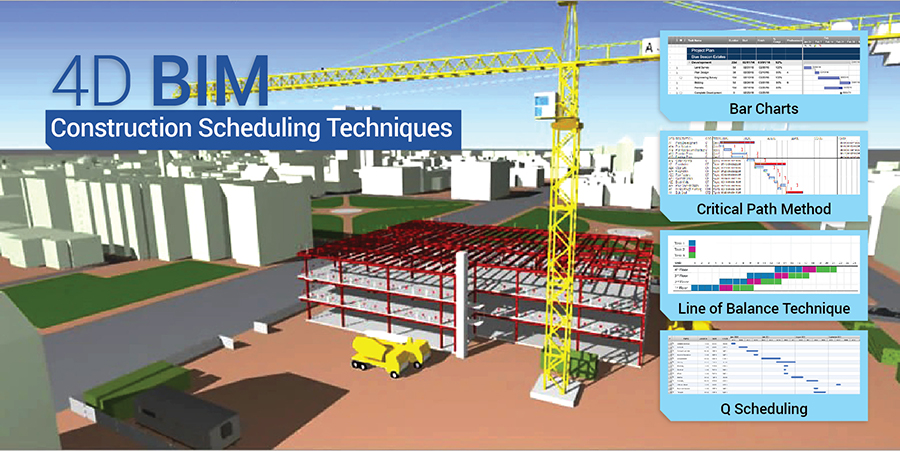
In the modern construction industry, where projects are becoming increasingly complex, 4D planning has emerged as a crucial tool for project success. By integrating the time dimension with 3D models, 4D planning allows stakeholders to visualize and manage the sequence of construction activities. However, the success of 4D planning hinges on one key factor: accuracy. Without precise data and planning, the benefits of 4D technology can quickly unravel, leading to delays, cost overruns, and miscommunication.
The Importance of 4D Planning
4D planning—a combination of Building Information Modeling (BIM) and scheduling—provides a dynamic way to map out construction projects. Unlike traditional scheduling methods, which rely on static Gantt charts or spreadsheets, 4D planning creates an immersive environment where teams can see how a project will unfold over time. This visualisation empowers project managers, contractors, and clients to:
- Identify potential clashes between different trades or structural elements.
- Optimize construction schedules by analysing sequences and dependencies.
- Enhance communication among stakeholders by providing a shared understanding of the project timeline.
- Reduce risks by anticipating challenges before they occur on-site.
Why Accuracy Matters
Accuracy in 4D planning is non-negotiable. Every piece of data—from the dimensions of a structure to the duration of an activity—feeds into the model and influences outcomes. When errors or assumptions creep in, the ripple effects can be catastrophic:
- Scheduling Delays If timelines are based on inaccurate durations or resource availability, the entire project schedule can be thrown off. This not only impacts deadlines but also disrupts the coordination of subcontractors and equipment.
- Increased Costs Errors in planning often translate into unplanned expenses. For example, if construction crews arrive on-site before preceding activities are complete, the result can be wasted labour hours and rental fees for idle equipment.
- Reduced Stakeholder Confidence Inaccurate 4D models can undermine trust between clients, contractors, and other stakeholders. When the reality on-site doesn’t align with the planned timeline, it raises questions about the reliability of the entire project plan.
- Safety Risks Misaligned schedules or overlooked sequences can lead to unsafe working conditions. For instance, scheduling activities in the wrong order might expose workers to unnecessary hazards.
Steps to Ensure Accuracy in 4D Planning
Achieving accuracy in 4D planning requires a commitment to detail and continuous refinement. Here are some key strategies to ensure precision:
- Collaborate Early and Often Involve all relevant stakeholders—architects, engineers, contractors, and clients—from the beginning of the planning process. Early collaboration ensures that the 4D model reflects the realities of the project and incorporates insights from all parties.
- Use High-Quality Data The accuracy of your 4D model is only as good as the data it’s built on. Ensure that 3D models, schedules, and resource plans are up to date, detailed, and validated before integrating them into the 4D environment.
- Leverage Technology Modern 4D planning software comes equipped with features to detect errors, simulate scenarios, and visualize complex projects. Make full use of these tools to catch inconsistencies and optimize workflows.
- Conduct Regular Reviews Periodic reviews of the 4D model help identify and correct errors early. Use progress tracking and on-site feedback to update the model and maintain alignment with real-world conditions.
- Invest in Training Equip your team with the skills needed to effectively use 4D planning tools. Training ensures that everyone understands the importance of accuracy and knows how to contribute to a reliable model.
The Future of 4D Planning
As technology advances, the role of 4D planning in construction will only grow. Emerging trends like artificial intelligence and machine learning promise to make models even more accurate by predicting outcomes and suggesting optimisations. However, these innovations won’t eliminate the need for human oversight. The responsibility for accuracy will always lie with the project team.
In a world where construction projects face tighter budgets, shorter timelines, and higher client expectations, accuracy in 4D planning isn’t just important—it’s essential. By prioritising precision and leveraging the power of technology, construction professionals can unlock the full potential of 4D planning, delivering projects that are not only on time and within budget but also safer and more efficient.
4D planning has transformed the way construction projects are managed, offering unparalleled insights into scheduling and sequencing. However, its success depends on the accuracy of the data and processes behind it. By focusing on collaboration, leveraging technology, and maintaining a commitment to precision, project teams can harness the true power of 4D planning to drive better outcomes. In the end, accuracy isn’t just a detail—it’s the foundation of success.
Testimonials
Very professional and efficient organization. Delivered a great product to a tight deadline.
ACE Power
Karl and the team are very professional and have a vast knowledge of BIM coordination.
Dwayne Willaims Babinda Electrics
We had multiple large projects with tight deadlines and needed a company we could trust. The teams delivery, attention to detail and understanding of what is being designed is always executed to a high standard.
Martin O’Donovan Envar Engineers
Draftech offered a flexible and reliable approach to working collaboratively with our team. They met our expectations and quality requirements and also offered up new ideas.
Draftech have proven to be a valuable and trustworthy resource and we will continue to work with Draftech on other projects.
Simon Marsden Umow Lai
Draftech is different from others in the professionalism and features they provide.
The ability to walk through projects in real time online provides invaluable insight into problem areas and helps provide an efficient resolution on the spot without many phone calls, emails and the necessity for us to paw through countless drawings to understand the issues.
Todd Morris Manager - Air mech
Draftech were put forward to FIP Electrical as the solution to Coordinate, Model, carry out clash detection, provide Electrical Services Shop Drawings, as built documentation and completed electrical model.
Simon Thorpe FIP Electrical
In close collaboration Draftech set up all our systems and model deliverables. In this process Draftech have proven to be a valuable resource for us and demonstrated commitment, understanding and professionalism.
David Skelley DJCoalition
Draftech’s attention to detail and proactive nature throughout the project assisted us in identifying issues before becoming evident on site, saving us both time and unexpected costs.
Matt Payne PJM Engineering Services
They delivered very high quality Revit models and associated 2D documentation at key milestones, working to a tight budget and in strict accordance with the Architects’ BIM requirements.
Peter Thomas Geoff Hesford
We found Draftech’s work to be of high standard and the team delivered exactly as agreed, in fact, when we considered the project complete, Draftech put further resources into the project as they were not satisfied.
John Johnson Beca
Engaging Draftech during design gave us the tools to make smart decisions.
Hansen Yuncken Design Manager - Michael Harkins
The drafting service is timely, reliable and fit for purpose for the built environment.
Peter Harvey Harvey Industries
Draftech stands apart from other drafting services that we have previously used in their attention to detail and ability to adapt to the individual client’s requirements.
Doug Holt McCaig Aircon
I can confidently recommend Draftech as a solid and reliable supplier, and experts in their field. I look forward to working with them again in the near future.
Chris Behan Norman Disney & Young
After seeing the benefits Draftech provided us on the Townsville Hospital Redevelopment we have set up a relationship with Draftech and intend to continue to use their BIM knowledge and skills for our future projects.
Brad Lund Energy Power Systems
Draftech has no competition as they are in a class of their own.
John Boyes Babinda Electrics
Draftech Developments Drafting and Design Capabilities, in conjunction with their outstanding level of Client service and support has provided great solutions to our engineering and Drafting Design portions within our Gorgon Barrow Island Project.
Aaron Hazelton Applied Electro Systems Pty Ltd
Draftech set up necessary systems and workflows very quickly, but also setup auditable estimating and weekly cost tracking processes that we utilised, requiring little maintenance.
TOM PURDON MPM GROUP




























